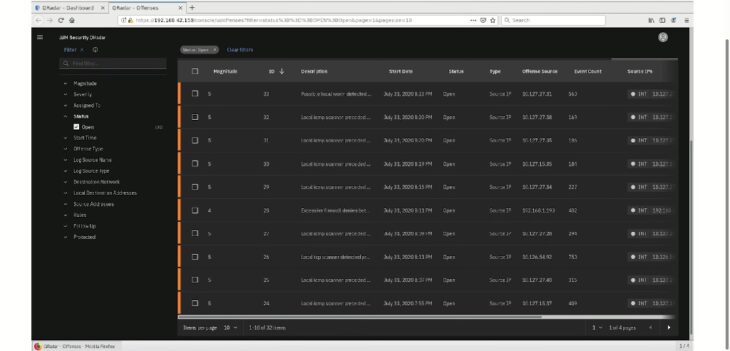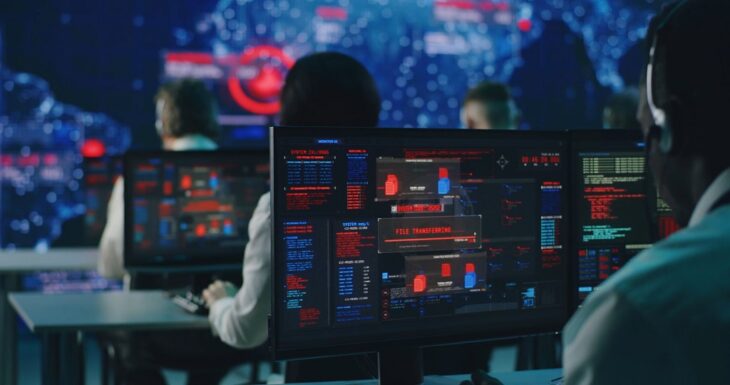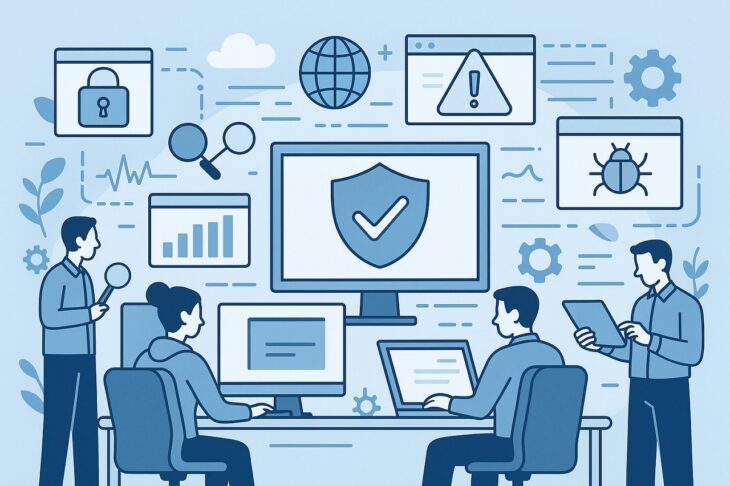Large enterprises are dealing with unprecedented volumes of data, increasingly complex infrastructure, and a growing array of sophisticated cyberattacks.
From zero-day exploits to multi-vector ransomware campaigns, the nature of modern threats demands a centralized, highly responsive, and deeply integrated defense mechanism. That’s where the modern SOC comes in.
A well-designed SOC not only monitors and responds to threats in real time, but also provides strategic visibility, automates response protocols, and aligns cybersecurity operations with business continuity goals.
Table of Contents
ToggleCore Functions of a Security Operations Center

At its heart, a SOC serves as the nerve center for enterprise cybersecurity. It aggregates logs, analyzes events, detects anomalies, and coordinates response strategies across the organization.
| Function | Description |
| Threat Detection | Continuous monitoring for anomalies, known threats, and zero-day activity |
| Incident Response | Investigation, containment, and remediation of cyber incidents |
| Vulnerability Management | Identifying, prioritizing, and patching system and application weaknesses |
| Security Information and Event Management (SIEM) | Centralized log aggregation, correlation, and analysis |
| Threat Intelligence | Integration of third-party and in-house intelligence feeds |
| Compliance Monitoring | Ensuring adherence to regulatory frameworks (e.g., GDPR, HIPAA, PCI DSS) |
Building Blocks of a Modern SOC
Creating a modern SOC requires a carefully designed infrastructure, skilled personnel, and continuous optimization. Each component must work in harmony to deliver real-time, proactive defense capabilities.
1. Infrastructure and Architecture

Modern SOCs are built on hybrid infrastructure – combining cloud-native tools and on-premise systems. The architecture must support massive data ingestion, high availability, and elastic scalability.
- SIEM and SOAR platforms: Tools like Splunk, IBM QRadar, and Microsoft Sentinel are core for log collection, event correlation, and automated response workflows.
- Endpoint Detection and Response (EDR): Deployed across laptops, servers, and mobile devices for granular visibility.
- Network Detection and Response (NDR): Identifies east-west traffic anomalies and lateral movement within enterprise networks.
- Deception Technology: Creates decoy assets to divert and observe attackers.
The design should also factor in redundancy, secure APIs for integrations, and secure data lakes for long-term storage and retrospective analysis.
2. Human Expertise and Role Definition

Even with automation, human intelligence remains irreplaceable. A mature SOC includes a clearly defined personnel structure:
| Role | Key Responsibilities |
| Tier 1 Analyst | Initial triage of alerts, basic investigation |
| Tier 2 Analyst | Deep incident analysis, root cause investigation |
| Tier 3 Analyst/Responder | Threat hunting, adversary emulation, containment actions |
| SOC Manager | Oversight, resource allocation, escalation management |
| Threat Intelligence Lead | Feed enrichment, attacker profiling, attribution |
Threat Intelligence: The Fuel of Proactive Defense

A modern SOC must shift from reactive posturing to proactive, intelligence-driven defense. Integrating threat intelligence feeds, both internal and external, helps prioritize alerts, enrich investigations, and even predict attack patterns.
Sources include:
- ISACs (Information Sharing and Analysis Centers)
- Government alerts (e.g., CISA advisories)
- Commercial TI vendors (e.g., Recorded Future, Mandiant)
- Dark web monitoring and honeypots
By contextualizing threat data with MITRE ATT&CK frameworks, SOCs can map threats to tactics and techniques, supporting more efficient remediation.
Automation and Orchestration (SOAR)
The average enterprise generates over 11,000 security alerts per day, according to IBM’s 2024 X-Force Threat Intelligence Index. Without automation, no team – regardless of size – can keep up.
Security Orchestration, Automation, and Response (SOAR) platforms automate repetitive tasks like:
- IP/domain enrichment
- Auto-containment of endpoints
- Ticket generation and routing
- Playbook execution for known incident types
This increases incident response speed and frees up human analysts for complex decision-making. However, automation must be tuned carefully to avoid false positives and unintended shutdowns.
Integrating Business Risk Context

One hallmark of a modern SOC is its ability to correlate security threats with business impact. Not all alerts have equal value. An attack on a development server, for example, poses a different level of urgency than an intrusion into a payment gateway or a vendor in the supply chain.
That’s why today’s SOC must act as more than just a technical function – it must understand and align with business priorities.
This is where the importance of security operations in threat response becomes clear: it’s not only about detecting anomalies, but knowing which threats can cause serious operational or financial harm and which ones pose minimal risk.
A well-designed SOC playbook would treat a ransomware event on a critical financial system as a top-priority incident, triggering real-time escalation protocols, while a brute-force attempt on a test server might simply be logged and monitored.
To enable this type of informed action, SOC teams must collaborate closely with risk management and business units to establish asset criticality tiers, ensuring that the response strategy reflects real-world consequences.
This risk-aware approach enables tiered response models, where high-priority systems receive instant intervention, and lower-priority events are addressed with calculated timing.
As cyberattacks become increasingly targeted and financially motivated, this contextual intelligence is vital – not just for defending the network, but for protecting business continuity, brand integrity, and regulatory compliance.
In 2025, business-aware SOCs aren’t optional – they are the baseline standard for mature cybersecurity infrastructure.
Continuous Improvement: Red Teaming and Tabletop Exercises
No SOC is ever “complete.” Enterprise SOCs must evolve through simulated attacks, third-party assessments, and real-world incident reviews. Red teaming helps identify blind spots, while purple teaming builds cooperative understanding between detection and attack perspectives.
Regular tabletop exercises involving IT, legal, comms, and executive leadership prepare the organization for worst-case scenarios – from data breaches to nation-state attacks.
Final Thoughts:
A modern SOC is not just a room full of screens and logs – it’s a dynamic system, blending human skill, machine intelligence, and business logic. For large enterprises, investing in the right tools and people isn’t just about compliance – it’s about survival.
Threats are faster, smarter, and more financially motivated than ever. To meet them head-on, your SOC must be a 24/7, proactive, intelligence-driven command center that understands not only how to detect threats – but why they matter to your business.


